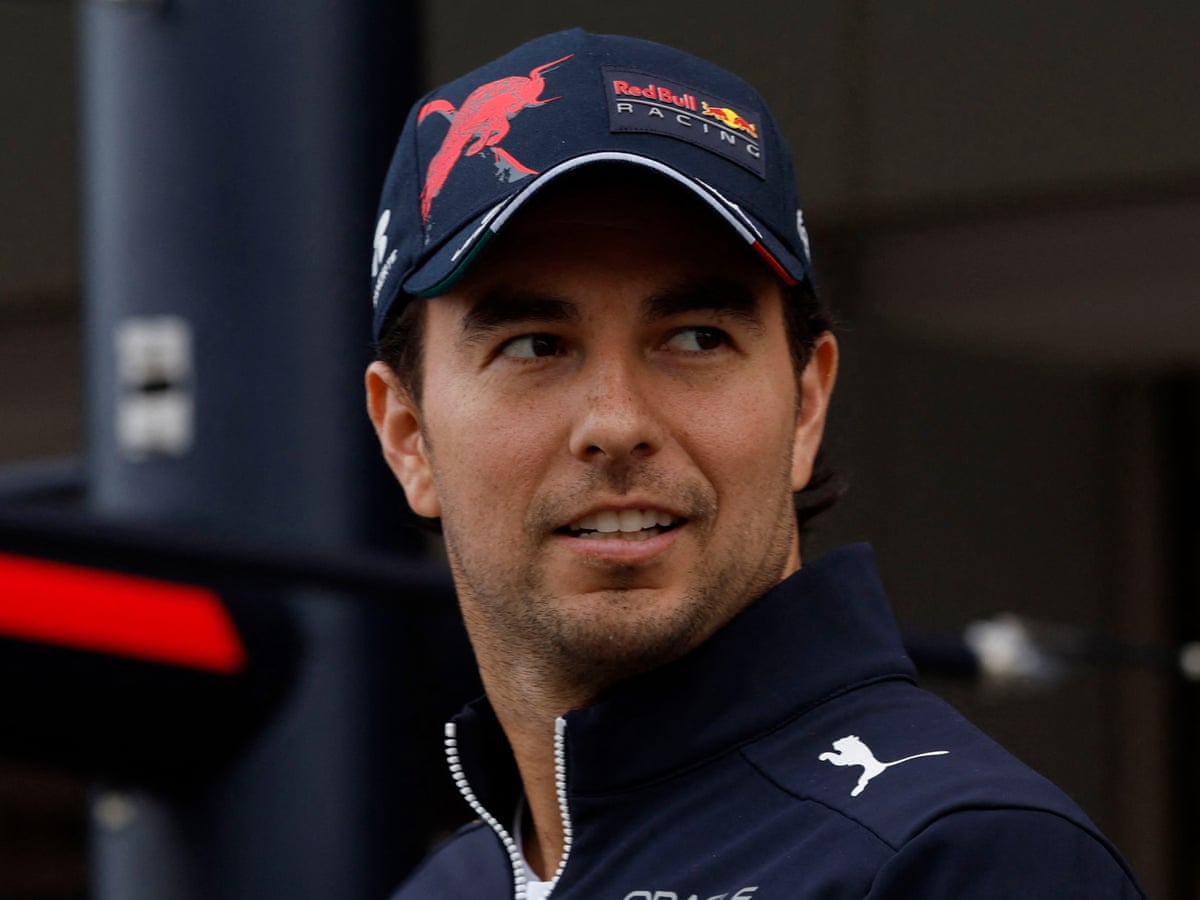The world of Formula 1 is in a state of perpetual motion, but recent developments have sent shockwaves through the paddock, heralding a future that promises to be faster, more contentious, and radically different. From Sergio Perez’s dramatic return to the grid with a new powerhouse team to game-changing regulations for 2026 that blur the line between thrilling and terrifying, the sport is on the cusp of a revolutionary new era.

Sergio Perez: The Return of a Vengeful King
In a move that few saw coming, Sergio “Checo” Perez is set to make a triumphant return to Formula 1, not with a midfield contender, but with the ambitious new Cadillac F1 team. The announcement itself was a bombshell, but it was Perez’s candid and cutting remarks that truly set the world of motorsport alight. Declaring he has “nothing left to prove” , the Mexican driver threw thinly veiled criticism at his former team, Red Bull Racing, and the drivers who succeeded him.
Perez’s tenure at Red Bull was a rollercoaster of dizzying highs and crushing lows. He played the consummate teammate to Max Verstappen, helping secure championships, yet often found himself struggling to tame a car notoriously designed around his colleague’s singular driving style. Reflecting on this period, Perez noted the unique challenge of the Red Bull machine and took pride in having “survived there for many years” , a feat others could not replicate. He pointed to the subsequent struggles of drivers like Yuki Tsunoda and Liam Lawson as a form of validation for his own performance , subtly suggesting that his own abilities were perhaps underrated during his time with the Milton Keynes squad.
While acknowledging his successors as “fantastic drivers” , the undertone was clear: the Red Bull seat is one of the toughest in all of sports. Perez spoke of the immense mental fortitude required to withstand the pressure-cooker environment , a strength he now brings to a Cadillac team eager to make its mark. His mission is no longer about proving his worth, but about rediscovering his passion for the sport he loves , free from the suffocating expectations of a top-tier team built around another star. Alongside fellow veteran Valtteri Bottas, Perez will lead Cadillac’s charge in 2026 , forming one of the most experienced and intriguing driver pairings on the grid.

The $100 Million Handshake: McLaren and Mastercard Forge a New Alliance
While driver market news dominated headlines, another monumental shift was occurring in the financial landscape of F1. McLaren, a team on a clear upward trajectory, announced a blockbuster title sponsorship deal with financial giant Mastercard, set to commence in 2026 . This isn’t just another partnership; it’s a statement of intent. The deal, reported to be worth a staggering $100 million, is not only the largest in McLaren’s storied history but also one of the most lucrative sponsorship agreements in the history of the sport.
From 2026, the team will officially compete as the “McLaren Mastercard Formula 1 team” . This influx of capital provides McLaren with the financial firepower necessary to challenge the likes of Red Bull, Ferrari, and Mercedes in the new regulatory era. It secures their long-term stability and equips them with the resources to invest heavily in research, development, and talent acquisition. For a team that has shown immense progress, this partnership could very well be the final piece of the puzzle needed to propel them back to championship glory.

2026 Regulations: Pushing the Boundaries of Speed and Safety
The true earthquake shaking the foundations of Formula 1, however, is the radical overhaul of the technical regulations for 2026. With teams like Mercedes, through the voice of Toto Wolff, already shifting their primary focus to this new chapter , the industry is bracing for change on an unprecedented scale.
The core of the new regulations lies in a dramatic shift in power unit philosophy. The electrical component of the engine is set to be massively amplified, contributing nearly 500 horsepower on its own . When combined with the internal combustion engine, the total output could surge past a mind-boggling 1,100 horsepower at full deployment. This leap in power will translate into terrifying straight-line speeds. Projections indicate that cars could scream out of the iconic Monaco tunnel at 350 kph and potentially touch the mythical 400 kph barrier on faster tracks .
Such speeds have raised serious safety concerns within the paddock . The FIA is scrambling to rein in this raw power, implementing complex restrictions on energy deployment and recovery on a lap-by-lap basis. Bespoke, reduced power modes are even being developed for tight street circuits like Monaco and Singapore to mitigate the risks .
Furthermore, the familiar Drag Reduction System (DRS) is being retired, replaced by a new “override mode” . Functioning like a “push to pass” system, it will grant drivers a burst of extra electrical energy when they are within one second of a car ahead , promising more dynamic and strategic overtaking battles. The complexity of these new systems, with varying deployment rates across different circuits , will present a steep learning curve for drivers and engineers alike. This is a leap into the unknown, a high-stakes gamble on the future of racing that promises spectacle but demands an unwavering focus on safety.
Adding to the intrigue for the new teams, Ferrari is expected to loan older-spec cars to Cadillac for extensive testing . This will allow the American outfit to get their team race-ready, providing invaluable experience with F1 machinery and weekend protocols long before their own car hits the track. It’s a strategic move that underscores the collaborative, yet fiercely competitive, nature of the sport’s new era. As a final curious footnote, Valtteri Bottas will carry over a five-place grid penalty from his final race in 2024 to his first race with Cadillac , an odd remnant of a past season that will mark the very beginning of his new journey.
News
Die Welt hat sich weitergedreht: Marie Fredriksson rechnet leise ab – 5 Stars, die sie im Stich ließen.
Der Klang von Roxette war der Soundtrack einer ganzen Generation. Mit Hits wie „It Must Have Been Love“ und „The…
Conny Froboess: Die bittere Wahrheit hinter der Traumkarriere – Im Alter trägt sie eine unheilbare Wunde.
Der Name Conny Froboess ist in Deutschland untrennbar mit einem Gefühl von Leichtigkeit und sonnigen Kindertagen verbunden. Wenn ihr größter…
DER WACKELDACKEL DER REPUBLIK: WIE MERZ’ „HERBST DER REFORMEN“ IN EINER EISZEIT DER STARRE ENDETE UND UNSERE ZUKUNFT VERPFÄNDET WIRD
Einbruch in die politische Wirklichkeit: Die bittere Bilanz nach dem Versprechen des Aufbruchs Mit großen Versprechungen begann die Zeit, die…
Bommes’ Nerven liegen blank: Unerwarteter Eklat in der letzten Folge von „Gefragt – Gejagt“ schockt die Fans
Ein Augenblick, der das harmonische Ende einer Quiz-Saison sprengte. Ausgerechnet in der vorerst letzten Ausgabe der erfolgreichen ARD-Show „Gefragt –…
Herzschlag-Finale in der Scheune: Friedrich und Laura trotzen dem TV-Kitsch mit dem ehrlichsten Liebesbeweis der Staffel
Der leise Moment, der lauter spricht als jede große Inszenierung Es war der Moment, auf den Millionen von Zuschauern der…
Kai Pflaume bricht sein Schweigen: Das 30-Jahre-Geheimnis hinter Deutschlands Vorzeige-Ehe und warum seine Ilke sein wichtigstes Korrektiv ist
Die deutsche Fernsehlandschaft hat viele Gesichter, aber nur wenige sind so konstant, so sympathisch und so untrennbar mit dem Gefühl…
End of content
No more pages to load












